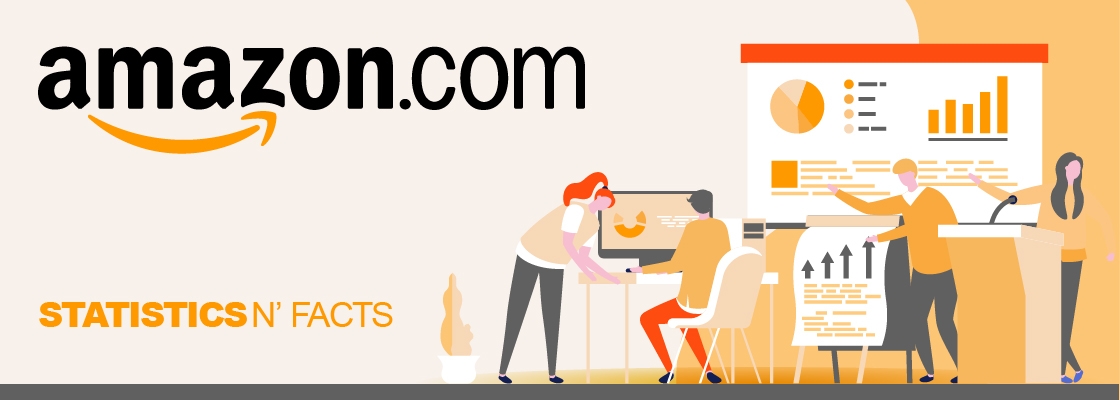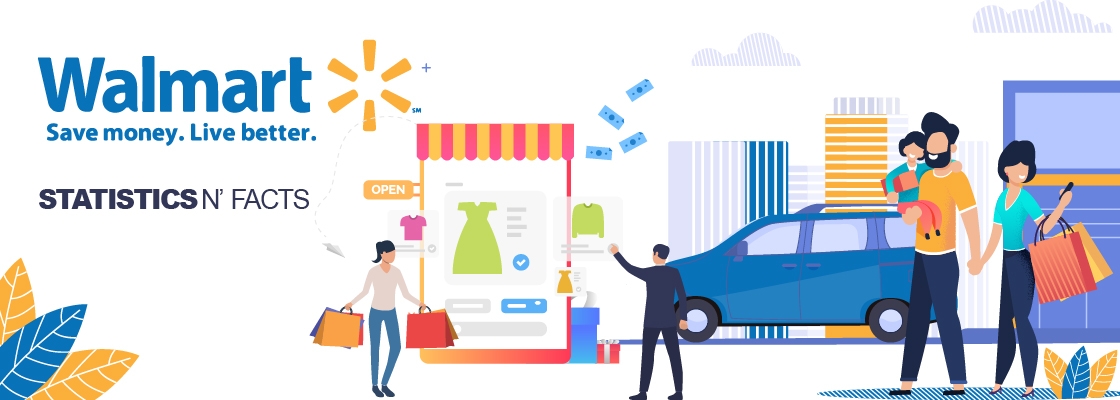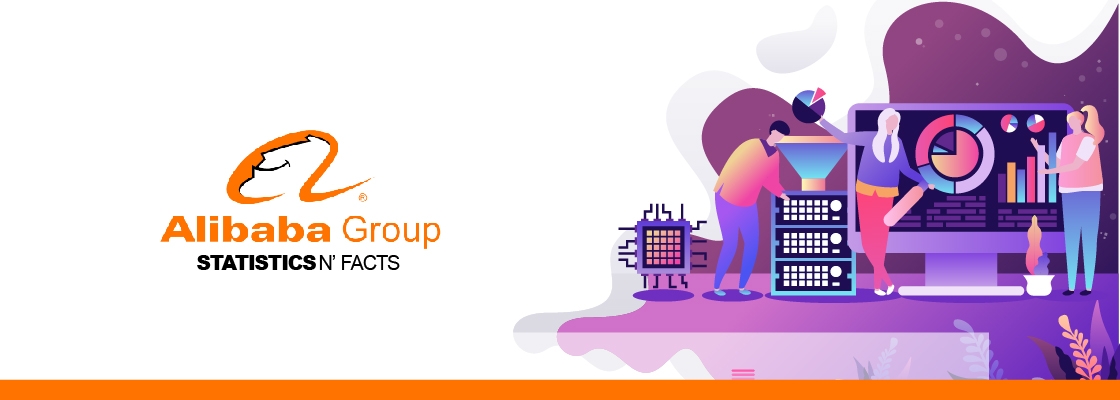Consumer Goods Industry Statistics: Companies that make and sell consumer goods are called the consumer goods industry. Advertising, marketing, and brand differentiation are essential considerations in this sector’s business strategy. Technological trends can be a powerful force in all areas of the consumer goods sector. The broad classification of consumer goods can classify them as durable or non-durable. This sector can also be broken down into many other industries. Some products, such as food, are essential, but others, such as automobiles, are luxury products. Consumer demand increases when the economy grows. This will lead to a greater need for high-end products in the coming years.
Consumer behavior is a critical factor in the consumer goods sector’s performance. If consumer demand falls, there will be greater relative demand for value products. Products such as food, clothing, beverages, shoes, and gasoline are the key factors in the consumer goods industry. Several consumer goods firms rely heavily upon advertising and brand differentiation. The priority is to create new tastes, fashions, and styles and market them to the consumer. Many manufacturing, distributing, and marketing aspects have changed dramatically in the last few decades. The modern Internet has had a profound and continuous impact on the sector of consumer goods.
Marketing and Branding Strategies
Key considerations for companies operating in the consumer goods sector include marketing, advertising, brand differentiation, and branding. Many consumer goods companies face competitors, substitute products, and other potential rivals. The price and quality competition are fierce. This makes it crucial for consumer goods sector businesses to differentiate their products and brands. Convenience products are goods that are commonly consumed and easily available to purchase. These goods are sold mainly by retailers and wholesalers. They include products such as beverages, dairy products, etc. Convenience goods can be divided into staple convenience items which fulfill the basic customer requirements and impulse convenience goods, including non-priority products. Unlike convenience goods, shopping goods are costlier and last longer than regular ones.
Shopping for goods requires more planning and thought than those made with convenience products—for instance, furniture and televisions. Rare and luxurious specialty consumer goods are not common. Only those with sufficient financial resources can purchase specialty goods. Marketing efforts are directed at a niche market, usually the upper classes. These products include fine jewelry, furs, and fine jewelry. There are few buyers for unsold consumer goods, but they are readily available. These items are seldom purchased in large quantities and often serve a single purpose, such as life insurance.
The Fast-Moving Consumer Goods Industry (FMCG)
Fast-moving consumer goods are the most significant consumer goods group. This segment comprises non-durable goods, such as food or drinks, that move quickly through the chain from producers through distributors and retailers to consumers. This segment offers retailers and companies high-quality shelf-space opportunities. Marketing can group consumer goods into four types: convenience, shopping, specialty, and unsought. Consumer buying habits determine these categories. Fast-moving consumer goods are highly competitive due to their high turnover rate. The market is dominated in this sector by prominent companies, such as Unilever PLC, Tyson Foods, Procter & Gamble, Coca-Cola, Nestle, PepsiCo, Danone, etc. These companies focused on marketing fast-moving consumer products to entice and draw consumers to their products.
Packaging is a crucial factor in every step of the production chain. To increase the efficiency in logistics and distribution, secondary and third-party packaging is often required. The primary packaging, or unit pack, is essential for product protection and shelf longevity. Additionally, it provides information to the consumer and offers sales incentives. FMCGs can be sold in large quantities and are reliable sources of revenue. This large volume of sales offsets the low-profit margins from individual sales. FMCG stocks can be a safe investment, with low growth but predictable margins and steady returns.
The Scenario of the Consumer Goods Industry
Technology has been a significant contributor to the growth of global consumer goods; however, it will become genuinely disruptive over the next decade. Consumer goods companies are facing significant strategic challenges to succeed in the new digital era. These include building a successful business through online channels, how brands and categories can be built in a socially connected world, and how technology-driven opportunities can help manufacturers understand their customers better and make connections more often. In this scenario, sales through online channels are leading in distribution channels.
The proportion of sales via online channels may reach a tipping point compared to offline stores. The online stores provide a variety of clothes with the latest trends. As such, consumers prefer buying in e-Commerce stores. Through online channels, manufacturers may be able to sell directly to their customers. This allows them to make purchases and customize products on their sites. Several manufacturers in consumer goods industries have succeeded in converting consumers through eCommerce.
The Strategic View of the Consumer Goods Industry
Nowadays, consumer companies have to make a strategic decision about whether they will follow their lead or not. One of the leading consumer goods companies, P&G, is one example of a company that has taken this challenge. Manufacturers must consider the pros and cons of launching an e-commerce site with an attractive brand name. Online retail platforms such as Amazon.com provide direct access to consumers for those who do not want to launch their Web shops. Markets for FMCG and consumer goods are able to adapt to changing consumer demands and trends. Digital innovation, the pandemic outbreak, and a greater emphasis on sustainable and healthy lifestyles have recently impacted the consumer products market. Digitalization gives customers control over their lives and allows them to compare and examine products on the spot.
Consumer goods companies must optimize their marketing strategies to maintain customer loyalty in a highly competitive market. The pandemic impacted the way people shop and caused major disruption in the market. Some areas were unable to find cleaning products, shelf-stable foods, beverages, or toilet paper within days. The consumer goods industry is also seeing an increase in the importance of sustainability. All product categories are seeing a rise in demand for ethically produced and sustainably manufactured consumer goods.
The rapid growth of small & medium-sized enterprises is creating significant business opportunities in the consumer goods market. Owing to strong distribution channels, the supply of goods is strengthened in rural and urban markets. Several brands provide various products in each sector which helps to grow their customer networks and business.
Global Net Sales of the Leading 50 Fast-Moving Consumer Goods Companies 2020
Based on their net sales, the ranking showed the top FMCG companies globally in 2020. Unilever was the fourth-largest consumer goods company in the world, with net sales of approximately 61.63 trillion dollars.
Online Share of the Global Fast-Moving Consumer Goods Market 2017-2025
This graph indicates the global online share of the fast-moving consumer goods market from 2017 to 2025. Online sales of FMCG accounted for 5.1% of 2018 total worldwide sales.
Most Popular FMCG Brands Worldwide 2021
With around 6.63 billion consumer reach points, Coca-Cola was the leading fast-moving consumer goods brand globally in 2021. Furthermore, in consumer reach points, Colgate ranked second and Maggi ranked at third place with 4.23 billion and 3.33 billion, respectively.
Leading Consumer Goods Market Sectors
Consumer Electronics
The market for consumer electronics consists of electronic and digital devices such as radios, television sets, smart speakers, telephones, smartphones, printers, copiers, ETC. It also comprises household appliances such as washing machines, refrigerators, ovens, etc. This market has generated a revenue of US$ 150.20 Bn in 2022 and is expected to grow at a CAGR of 1.44% in the coming years. Online sales channels will generate the total market revenue for consumer electronics in 2022. By global comparison, most of the revenue is generated in china, and the value is approx. US$ 251.40 Bn in 2022.
Footwear
The footwear market is high in demand, and thus, it’s growing rapidly. In 2022, this market has generated a revenue of US$ 381.90 Bn, and its expected growth rate is 5.88% during the forecasted period. By global comparison, the United States generated the highest revenue of US$ 85.84 Bn in 2022. The per-person average volume is anticipated to amount to 1.9 pairs in 2022 in the global footwear market.
Apparel
The apparel industry is one of the essential industries in the world. It is responsible for the production of clothing and other textile products. Apparel can protect the body from the environment and enhance the wearer’s appearance. In 2022, the apparel market is expected to generate US$ 364.20 bn. It is expected to grow at a CAGR of 4.15% in the coming years. Globally, as compared to other regions, the United States has generated the highest revenue of US$ 312 Bn in 2022.
Furniture
The Furniture market consists of various movable commodities designed for several daily actions such as sleeping, seating, storing, etc. The material used for furniture manufacturing comprises plastic, wood, and metal. With the rapid rise in eCommerce sales, several key players focus on new trends and designs to manufacture unique and affordable furniture. This market has generated a revenue of US$ 654.20 Bn in 2022 and is expected to grow at a CAGR of 6.58% in the coming years. By global comparison, the United States generated the highest revenue of US$ 229.90 Bn in 2022.
Beauty & Personal Care
Beauty & personal care comprises cosmetics, hair, and body care consumer goods. It includes beauty cosmetics for the face, lips, and skincare products, fragrances, and personal care products such as hair care, deodorants, and shaving products. In 2022, the beauty & personal care market is expected to generate US$ 534.0 Bn. It is expected to grow at a CAGR of 5.86% in the coming years. Globally, as compared to other regions, the United States has generated the highest revenue of US$ 85.06 Bn in 2022.
Top Five Companies in the Consumer Goods Industry
Unilever Plc
Unilever is a manufacturer and distributor of personal care, household and food products. This company is the most purpose-driven, successful business in the world. It works with brands loved around the globe and makes a difference in the lives of the people we serve. The company encourages innovation of all sizes to make the business succeed and grow. Unilever believes that business can be a force for good. You can unleash your creativity, question ideas, and disrupt processes. The company offers products under more than 400 brands and serves around 25 million retail stores globally, including approximately 2.5 billion customers in 190 countries. The global revenue generated by Unilever group was US$ 55.10 Billion, In 2021.
PepsiCo, Inc.
PepsiCo, Inc. is a global food and beverage company with a broad portfolio of products and offers products under various brands. Pepsi-Cola Company was founded in 1902 by Bradham as his drink became more well-known at the worldwide level. Pepsi-Cola was merged in 1965 with Frito-Lay Inc. to form PepsiCo, Inc. The company is home to a range of famous brands. About 60% are dedicated to food products, while 40% are dedicated to beverages. Five primary brands include Frito-Lay, Gatorade, Pepsi-Cola, Quaker, and Tropicana. The company manufactures, markets, distributes, and sells a variety of beverages, foods, and snacks and serves consumers in over 200 countries and territories globally. The net revenue of PepsiCo was US$ 79.47 Bn.
The 3M Company
3M Company is an American multinational conglomerate specializing in the industry, worker safety, and U.S. health care. It is in a suburb of Saint Paul, Minnesota, the U.S. It was established in 1902. 3M is a multinational U.S.-based company that produces approximately 60,000 products. These range from adhesives and electronic materials. 3M operates in 70 countries using various business segments, including Safety and Industrial, Transportation and Electronics, and Consumer goods. In the year, net sales of the 3M company were US$ 35.4 Bn.
Procter & Gamble Company (P&G)
Procter & Gamble Company, an American multinational consumer products corporation, is headquartered in Cincinnati. The company operated in 180 countries and was established in 1837 by William Procter & James Gamble. It focuses on personal and household health/consumer hygiene products. These products can be divided into different segments: beauty, grooming, health care, fabric & home care, baby, feminine & family care. In the year 2021, the net sales of P&G were US$ 76.12 Bn.
Nike, Inc.
Nike, Inc. is an American corporation engaged in the development, manufacturing, and sales as well as marketing of footwear, accessories, apparel, services, and equipment. Therefore, Nike is the largest athletic apparel company in the world. The company was founded in 1964. In 1971, Nike was created after the Greek goddess’s victory. Nike, one of the world’s most valuable brands, employs over 73,000 people. It sells its apparel through Nike, Jordan Brand, and Converse brands. In 2021, Nike’s global revenue amounted to about 44.54 billion US$.








